It feels like sometimes I get so caught up in my kitsuke experimentation, be it kimono-as-costumes, turning a kimono into a ballgown, steampunk hime-styles, or one of the other multitudes of things I’ve done lately, that I forget about the timeless simplicity that drew me to kimono in the first place. So for this outfit, I decided to go in a very clean and traditional direction that’s all about the little details. I paired up my sagara embroidery tsukesage with an obi I got in the infamous obi bundle and hadn’t used yet. Accessories were plain and classic, a casual obijime that reflects the colour of the kimono and an obiage that adds a little bit of sweetness while still being quiet and discreet. This obi’s motif placement is very strange, and I had to cheat a fair bit while tying it, but isn’t that what mannequins are for? 😉
I doubt I’ll be reaching for this obi again any time soon, which is a shame because the soft embroidered details on it are so pretty. It’s just too much of a nuisance. But I very am glad I decided to drag these two pieces out of storage and do something with them. I’m working on a bunch of new stuff behind the scenes, so this may be the last outfit post for a few weeks. I’m glad it’s one I’m proud to leave on the mannequin.
Items used in this coordination
- Rich Red Sagara Embroidery
- White Pines
- Salmon Rinzu
- Red & White

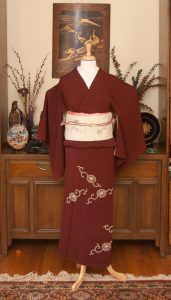
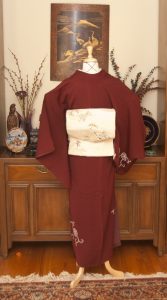
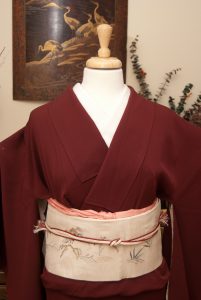
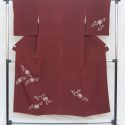
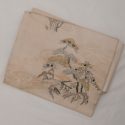
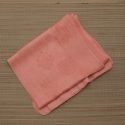
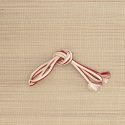
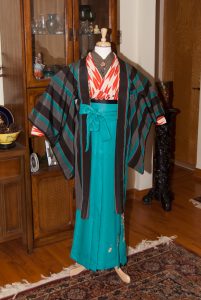
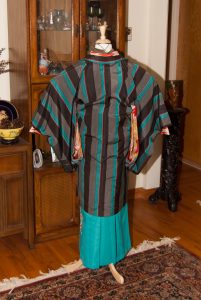
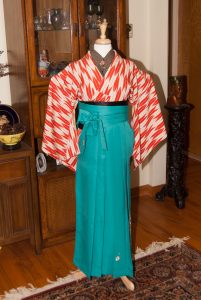
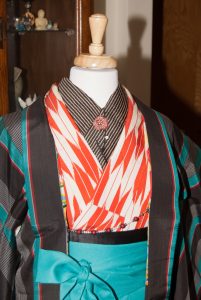
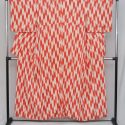
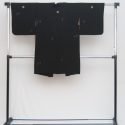
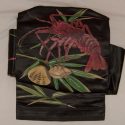
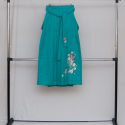
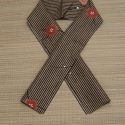
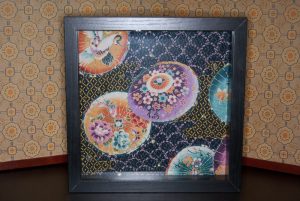

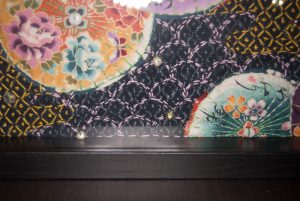
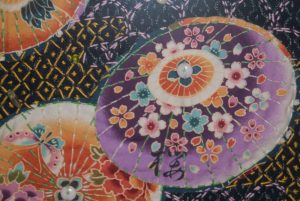


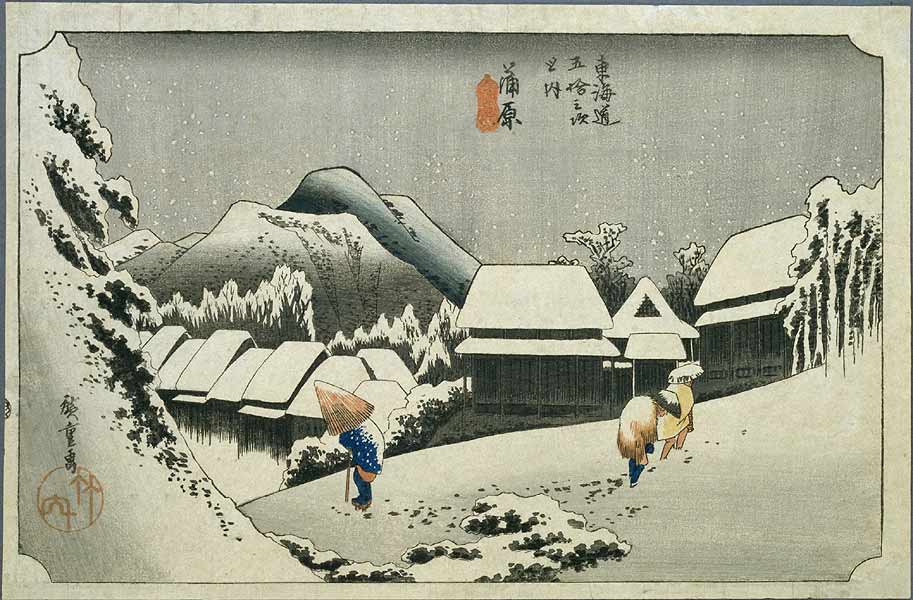
























 Bebe Taian
Bebe Taian CHOKO Blog
CHOKO Blog Gion Kobu
Gion Kobu